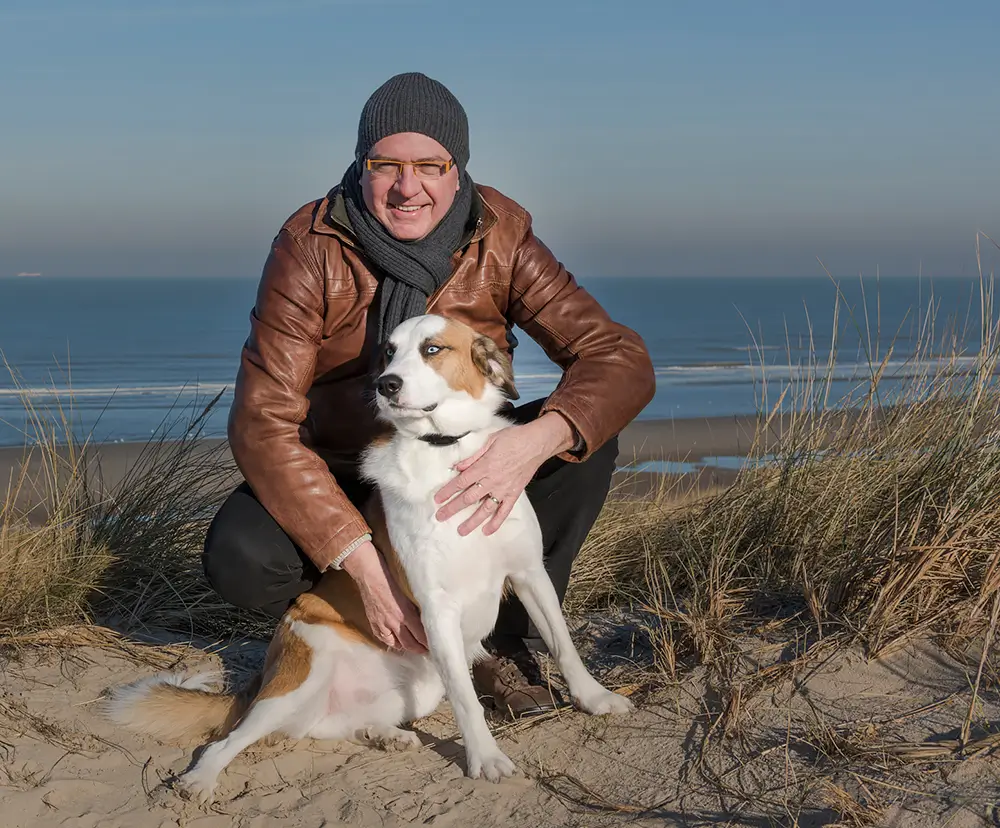Eddy Verloes, a Belgian photographer, has won numerous awards for his literary symbolic photography.
He skillfully weaves visual narratives that blend realism and surrealism, capturing the essence of interiors, landscapes, and urban life.
Verloes’ spontaneous approach allows him to seize fleeting moments of everyday life, infusing his work with a sense of wonder and mystery. His fascination with literature and philosophy drives him to explore the profound and the poetic, leaving viewers with a profound sense of awe and contemplation.
He shoots with his soul, not with the camera.
Eddy Verloes is Master of Linguistics and Literary Studies (magna cum laude) at the University of Louvain, Belgium. Studies in photography at the Louvain CVO, Belgium.
2015-2024: exhibitions in different galleries or special locations (solo or with other photographers, painters, poets, sculptors, musicians, composers, video artists, mixed media artists) in the USA, United Kingdom, Canada, United Arab Emirates, Brasil, Mexico, Russia, Germany, Greece, Crete, Malta, Hungary, Spain, Italy, Serbia, Austria, France, The Netherlands and Belgium.
Photo books
No time to Verloes (2015),
Cuba libre (2016),
Zeezuchten/Seasighs (2020),
Buiten zinnen/Losing Our MInds (2021),
Aardelingen/Earthlings (2022).
Most important awards in 2020-2024
Selected as one of the best contemporary photographers worldwide by the American site All-About-Photo |
Winner Life Framer Photo Contest 2020 (Theme: "Civilization") judged by Tate Modern's Curator of Intern. Art & Photography Emma Lewis |
Travel Photographer of the Year 2020 (cat. People of the world) |
Winner Pangea Prize Siena Creative Photo Awards 2021 (cat. Open Theme) |
Winner Malta International Photo Travel Award 2020/2021 |
2nd Place MonoVisions Awards 2021 (Photojournalism), London (UK) |
Finalist FOCUS Photo L.A. 2021, Los Angeles (USA) |
Winner Siena International Photography Awards 2021 (Fascinating faces and characters) with my "Remarkable Artwork" |
Winner 16th Annual Black & White Spider Awards 2021, Beverly Hills (California) |
Winner of the Union of Lights 2021 World Photography Contest ("Street & Lifestyle") |
3rd Place Winner (Photojournalism) Monochrome Photography Awards 2021, London (UK) |
Winner 17th Pollux Awards 2021 (Open Theme - series), Barcelona (Spain) |
Winner of The Chelsea International Photography Competition 2021/2022, New York (USA), Exhibition @ Agora Gallery, NY, 2023, Jan 4-17 |
Winner Fine Art Photography Awards 2021/2022 (Photojournalism), 8th edition, London (UK) |
Gold Winner Muse Photography Award 2022 (Fine Art Photography - People) with my series 'Losing Our Minds', NY, (USA) |
Gold Winner London Photography Awards 2022 (Black & White Photography - Religious) with my series 'Losing Our Minds', London (UK) |
Gold Winner London Photography Awards 2022 (People Photography - Religious) with my series 'Losing Our Minds', London (UK) |
Bronze Medal Paris International Street Photo Awards 2021- Category Black & White |
Winner of the Intern. Black & White Photography Awards 2022 with my series 'Losing Our Minds', also awarded with a 'Special Mention' (Paris) |
Overall Contest Winner @ the reFocus 'One Shot Contest' Awards 2022, honoring the most extraordinary photographers of our time |
Photographer of the Year Winner (Amateur) with an 'Outstanding Achievement' @ the 17th B&W Spider Awards 2022, Beverly Hills (USA) |
Silver Winner in Portfolio/Fine Art @ Budapest International Foto Awards 2022 with my series 'Losing Our Minds' |
Silver Winner NY Photography Awards 2022 - Editorial Photography/Religious with my series 'Losing Our Minds' |
Silver Winner NY Photography Awards 2022 - People Photography/Religious with my series 'Losing Our Minds' |
Inductee to the Influx Gallery's Hall of Fame (London) - Merit of Excellence - 2023, January |
Finalist Life Framer Humans of the World Competition (USA) - 2023, January |
Winner of the 1st Salamander International Art Prize + exhibition @ Monteoliveto Gallery Paris (France) - 2023, February 23-28 |
Gold Winner Muse Photography Award 2023 (People Photography - Couple) with my series 'Get connected', NY, (USA) |
Silver Winner in Portraiture/Culture @ PX3 Prix de la Photographie Paris 2023 with my series 'Losing Our Minds' |
Winner 1st Budapest Intern. Art Show artBIAS 2023, organized by Teravarna Art Gallery Los Angeles (USA) and Golden Duck Gallery Budapest |
Grand Prize Winner of the Great Photo Awards 2023/ Black & White World Photo Competition, Athens (Greece) with 'Losing Our Minds' |
Finalist Travel Photographer of the Year 2023 |
Selected for the Xposure International Photography Festival @ Expo Center Sharjah, United Arab Emirates, 2024, Feb. 28 - March 5 |
Platium, Gold & Silver Winner @ 2024 MUSE Photography Awards, New York |
Bronze Winner in Architecture @ PX3 Prix de la Photographie Paris 2024 with my series 'The coal mine' |
Finalist Travel Photographer of the Year 2024 |
Winner of the 1ste edition of The B&W FotoNostrum Choice Awards Barcelona (Spain) + exhibition @ FotoNostrum Gallery Feb. 2025 |
Winner and 'Discovery of the Year' + 'People's Vote Award' @ 2024 World Photo Annual Refocus Award (Cat. Film/Analog) |
Grand Winner Paris International Street Photo Awards 2024 (Cat. Elder People Street) with my series ‘Cuba libre'
Awarded Photographer of the Week - Week 52
